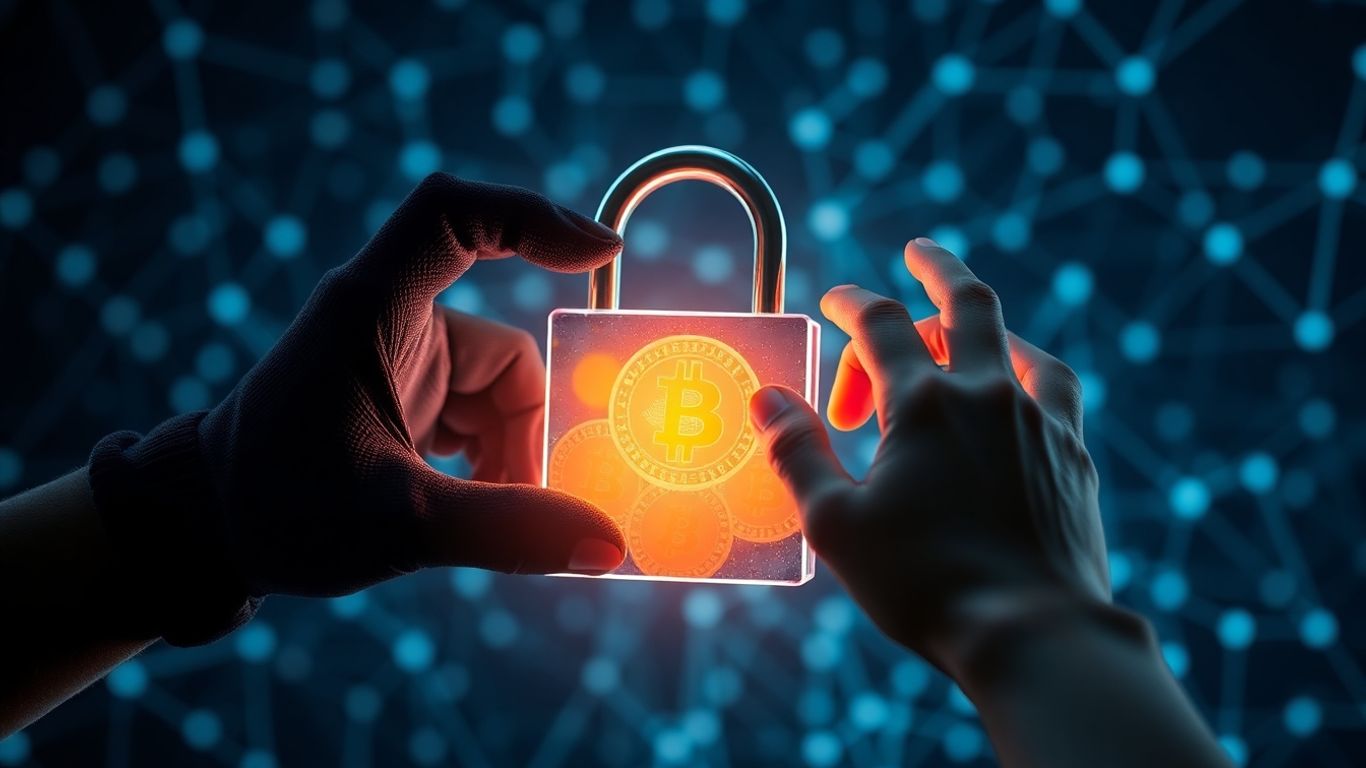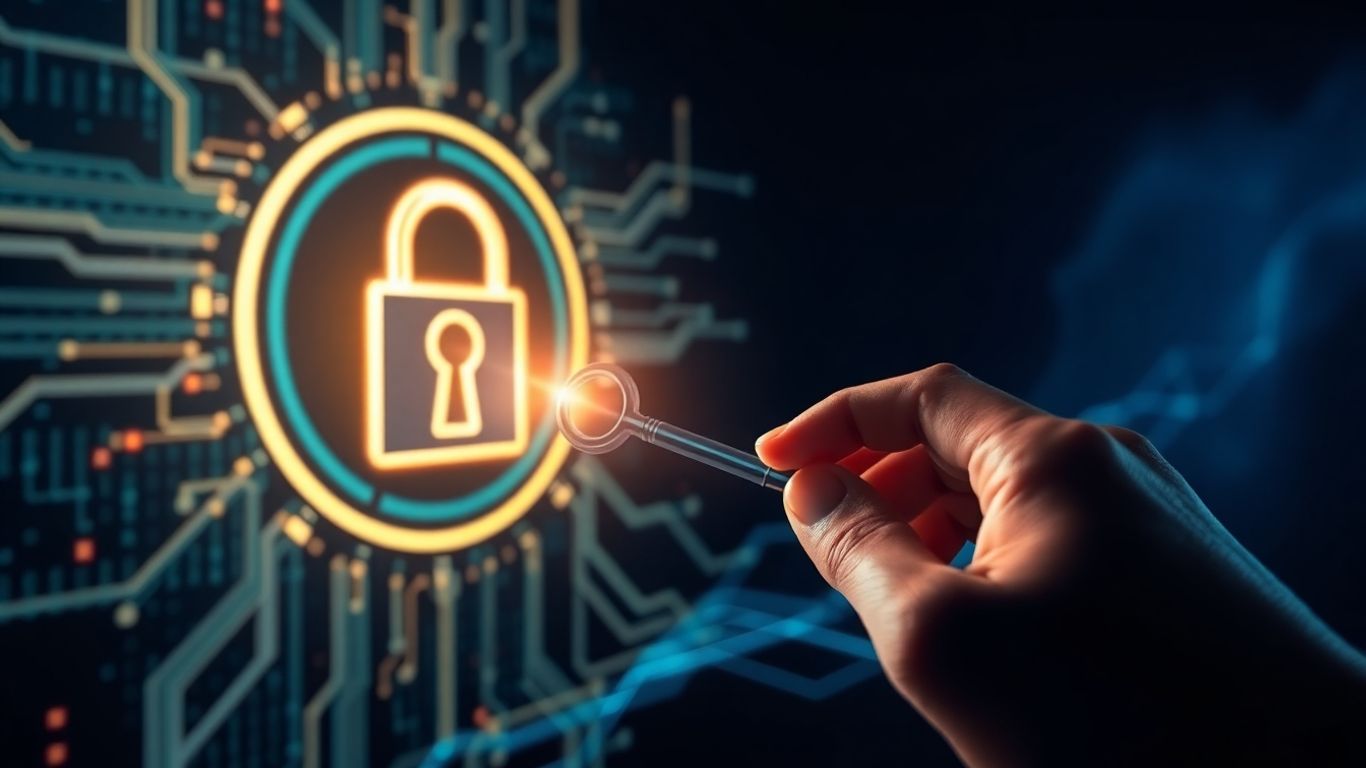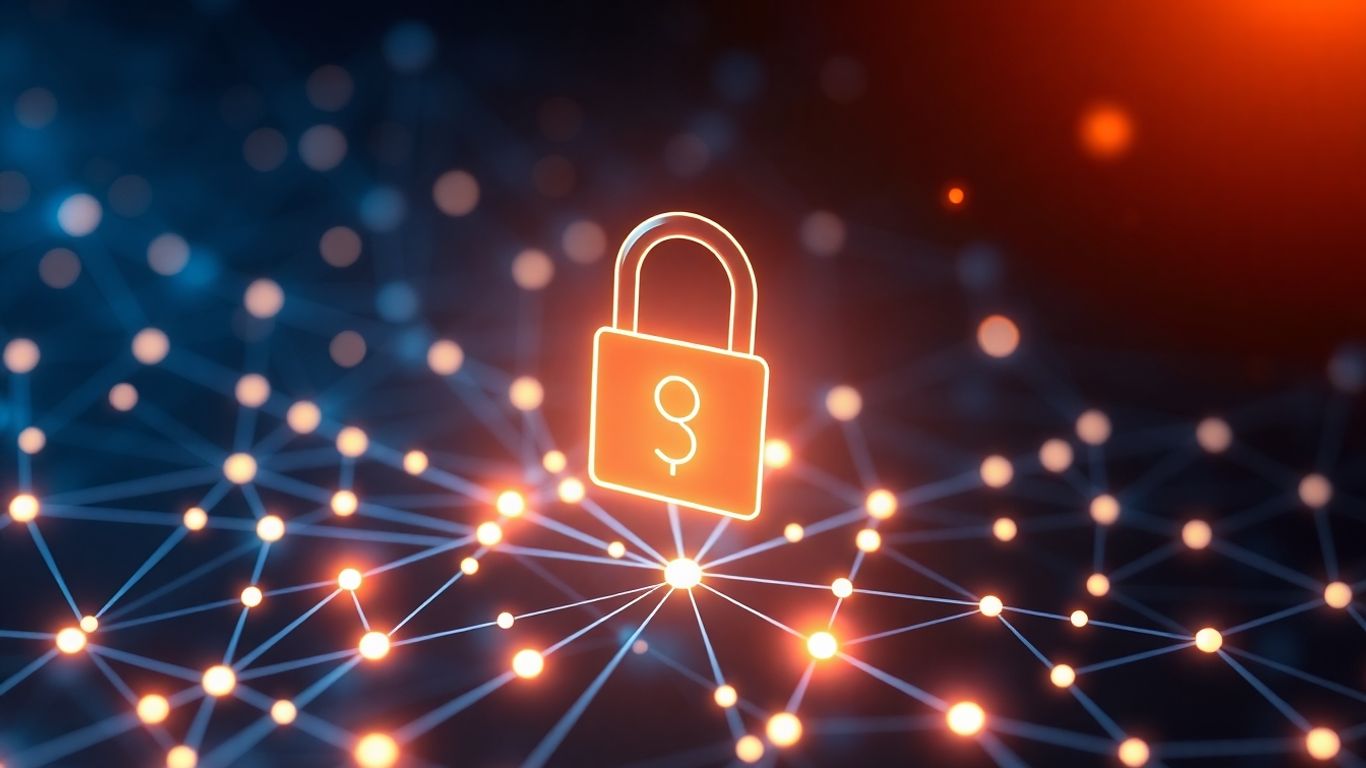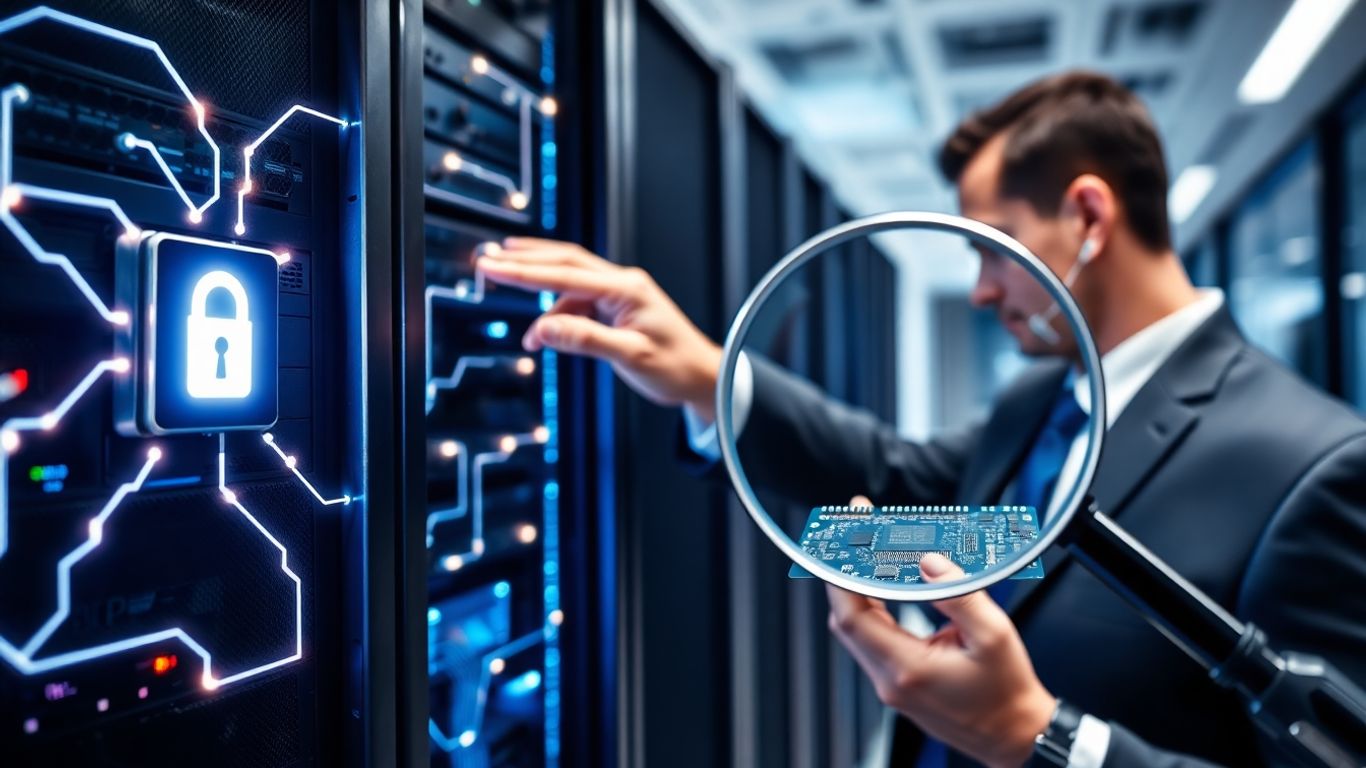[ newsletter ]
Stay ahead of Web3 threats—subscribe to our newsletter for the latest in blockchain security insights and updates.
Thank you! Your submission has been received!
Oops! Something went wrong. Please try again.
Need crypto asset recovery help? Explore technical solutions, navigate the recovery process, and find trusted partners for reclaiming lost funds.





Losing crypto assets can feel like a total nightmare. You might think they're gone for good, but there are actually ways to try and get them back. It's not always simple, and sometimes you need help from folks who really know their stuff. This article is all about exploring those options for crypto asset recovery help, looking at the tools and the people who can make a difference when your digital funds go missing.
Losing crypto assets can feel like a punch to the gut. Whether it's a hack, a scam, or just a simple mistake, the thought of those funds being gone forever is a tough one to swallow. But here's the thing: not all lost crypto is gone for good. Crypto asset recovery is the process of trying to get back digital funds that have been lost, stolen, or are otherwise inaccessible. It's a specialized field that uses a mix of technical know-how and investigative skills to track down and reclaim these assets.
At its core, crypto asset recovery is about tracing the digital trail of your lost funds and then taking action to get them back. Think of it like digital detective work. Because blockchain transactions are public, there's often a record of where your crypto went, even if it was sent to a scammer or a wrong address. Recovery specialists use advanced tools to follow these transactions, identify the destination, and then work to freeze or retrieve the assets. This process is complex and requires specific expertise that most individuals don't have. It's not just about finding the coins; it's about understanding the technical and legal pathways to actually get them back into your possession.
When you lose crypto, time is usually of the essence. Scammers and hackers are quick. They often move stolen funds rapidly through various wallets and exchanges, sometimes using mixers to obscure the trail. The longer you wait, the harder it becomes to track and recover those assets. This is why acting fast is so important. Every minute counts when you're trying to get your money back before it disappears into the digital ether.
People lose crypto in a surprising number of ways. Some of the most common include:
When your crypto assets go missing, especially due to hacks or sophisticated scams, the situation can feel pretty dire. It's not just about losing money; it's about the frustration and helplessness that comes with it. Fortunately, there are technical approaches that can help get your funds back.
One of the nastiest tricks hackers use after compromising a wallet is setting up bots. These bots watch the compromised wallet like a hawk. The moment any new funds arrive, even just enough to cover gas fees, the bot snatches them up instantly. This effectively traps any remaining assets in the wallet, making them impossible to move through normal means. This is where Flashbots technology becomes a game-changer. Instead of sending transactions one by one, which the bots can easily intercept, Flashbots allows for the bundling of multiple transactions into a single, private package. This package is sent directly to miners, bypassing the public mempool where the bots are lurking. Think of it like a secret tunnel – you get your assets out before the bots even know what's happening. This method is particularly effective for recovering assets still held within a compromised Ethereum wallet.
Atomic transactions are key to making the Flashbots approach work. In simple terms, an atomic transaction is an all-or-nothing operation. Either all parts of the bundle execute successfully, or none of them do. For asset recovery, this means the transaction to fund the wallet (to pay for gas) and the transaction to move your assets out are bundled together. They are executed as a single, indivisible unit. This prevents scenarios where you might fund the wallet but then fail to move the assets, leaving them vulnerable. This bundling provides a much higher level of security and certainty when dealing with potentially trapped funds. It's a way to ensure that the recovery process itself doesn't introduce new risks.
Modern recovery tools don't just rely on you knowing exactly what's in your wallet. They can automatically scan your compromised wallet to identify all recoverable assets, including various token types like ERC-20, ERC-721 (NFTs), and ERC-1155. Beyond just standard asset recovery, these tools often allow for the creation of custom transactions. This is super useful if you need to interact with specific smart contracts, perhaps to claim an airdrop or perform another complex action before moving your assets. You can essentially build out a sequence of operations that are then bundled and executed atomically. This flexibility means you're not just limited to moving existing assets; you can perform necessary actions to secure or claim other potential gains before the final recovery.
Here's a quick look at the typical process:
Recovering assets from a compromised wallet requires specialized techniques. Standard methods often fail because of automated bots that steal any incoming gas fees. Advanced solutions use private transaction networks and atomic bundling to bypass these bots, allowing for the safe retrieval of funds still within the wallet.
Remember, these technical solutions are designed to recover assets that are still in the compromised wallet. They cannot retrieve funds that have already been sent to a hacker's address. For those situations, you'll need to explore other avenues, often involving blockchain analytics firms and potentially law enforcement.
Losing access to your crypto or having it stolen can feel like a punch to the gut. It's a stressful situation, no doubt about it. But before you throw in the towel, know that there are steps you can take to try and get your assets back. It's not always a quick fix, and sometimes it requires a bit of technical know-how or even legal help, but understanding the process is the first big step.
The very first thing you need to do is figure out exactly what you're dealing with. This means identifying the specific wallet addresses involved – both the one where your assets were held and any addresses they might have been sent to. You'll also need to pinpoint the types of crypto assets that are missing. Were they Bitcoin, Ethereum, specific tokens, or NFTs? Gathering all this information is like collecting clues for a detective. The more details you have, the better your chances of tracing the funds.
Once you've got a handle on the situation, the next phase often involves connecting to secure platforms or networks. This is especially true if your assets are trapped due to malicious bots or other technical hurdles. Think of it like setting up a secure communication line. You'll want to use a wallet that you know is safe and connect through networks designed to shield your recovery attempts from prying eyes. This might involve using specific tools or services that operate in private environments, away from the usual public blockchain chatter where attackers might be watching.
Sometimes, the best way to recover assets is to use specialized tools that can bundle your recovery actions into a single, private transaction. This way, the hacker's bots don't even see what's happening until it's too late.
This is where things get really hands-on. After identifying the assets and connecting to a secure environment, you'll likely be presented with a set of transactions designed to move your assets back to safety. It's super important to review these carefully. Make sure the destination address is correct and that the transaction details match what you expect. Once you're confident, you'll need to sign these transactions. This usually involves using your secure wallet to authorize the movement of funds. It's a critical step that confirms your intent and allows the recovery process to move forward. Don't rush this part; double-checking everything can save you a lot of headaches down the line.

When your crypto assets go missing, it's rarely a solo mission to get them back. The digital world, while borderless, often requires a coordinated effort involving various players to trace and recover stolen or lost funds. Think of it like a complex investigation where different agencies and specialists need to work together.
Law enforcement agencies are a key part of the recovery puzzle. While they might not always have the deep technical know-how of blockchain forensics, they have the authority to freeze assets and pursue legal action against perpetrators. This is where global networks become super important. Agencies worldwide are increasingly sharing information and coordinating efforts to track down criminals who operate across borders. For instance, initiatives like the T3 Financial Crime Unit, a partnership involving TRON, Tether, and TRM Labs, have shown significant success in freezing illicit assets by enabling real-time coordination between private sector intelligence and global law enforcement.
The speed at which crypto transactions can move across different blockchains and jurisdictions presents a significant challenge for traditional law enforcement. This necessitates advanced tools and rapid information sharing to be effective.
This is where the technical heavy lifting often happens. Firms specializing in blockchain analytics, like TRM Labs or Chainalysis, have developed sophisticated tools to trace the flow of funds across public ledgers. They can identify patterns, link wallets, and even flag suspicious activity that might otherwise go unnoticed. These firms work closely with law enforcement, providing them with the detailed reports and evidence needed to build cases and request asset freezes from exchanges or custodians. Their ability to analyze complex transaction networks is what often makes recovery possible in the first place.
Sometimes, the technical tracing and law enforcement involvement aren't enough. Complex cases, especially those involving international jurisdictions, multiple parties, or intricate smart contract exploits, require specialized legal expertise. Lawyers experienced in cryptocurrency law can help navigate the legal frameworks, liaise with different authorities, and represent your interests in court or arbitration. They can also advise on the best strategy for recovery, whether it involves civil suits, asset forfeiture proceedings, or negotiating settlements. Having the right legal team can make a huge difference in the outcome of a difficult recovery process.
When you're trying to get back lost crypto, it's not just about knowing who to call. There are some pretty sophisticated tools and tech out there that make a big difference. Think of it like having a super-powered detective kit for the digital world.
This is where the real detective work happens. Blockchain forensics is all about digging into the transaction history on the blockchain. Since blockchains are public ledgers, every transaction is recorded and can be followed. Specialized software can analyze these chains of transactions, showing where funds went, even if they've been moved through multiple wallets or mixed. It's like following a digital breadcrumb trail. This helps recovery specialists pinpoint the location of stolen assets, which is a huge step in getting them back. Companies use advanced analytics to trace these movements, often identifying patterns that human eyes might miss. This is a key part of how services like AMR operate.
Artificial intelligence is changing the game in crypto security and recovery. AI can monitor blockchain activity in real-time, spotting unusual patterns that might indicate a hack or scam in progress. It's not just about finding problems after they happen; AI can also help prevent them. For example, AI can analyze smart contracts for vulnerabilities before they're even deployed, or flag suspicious websites trying to trick people into giving up their wallet details. This proactive approach means fewer people lose their assets in the first place. It's also used to analyze wallet behavior, flagging addresses linked to risky activities.
Imagine having a quick way to gauge how safe a smart contract or a wallet is. That's what trust scores do. These scores are generated by analyzing various factors, like the code's security, the wallet's transaction history, and its connections to known risky entities. Platforms provide these scores to help users make more informed decisions. A low trust score might signal a higher risk of a scam or exploit. This kind of information is super helpful when deciding whether to interact with a new project or send funds to a particular address. It adds another layer of protection, especially for those new to the crypto space.

So, you've had a crypto mishap. Maybe funds are stuck, or worse, gone. It's a stressful situation, and picking the right help is super important. You don't want to hand over sensitive info to just anyone, right? It's like choosing a mechanic for your car – you want someone who knows what they're doing and won't rip you off.
When you're looking at companies that say they can help get your crypto back, there are a few things to check. First off, do they actually have a track record? Ask for proof, like case studies or testimonials, but be smart about it. Anyone can make up a story. Look for providers who are upfront about their methods and the technology they use. Are they just using basic tools, or do they have advanced stuff like blockchain forensics and AI for tracking down lost assets? Also, consider their transparency. A good partner will explain the process clearly, including the risks and potential outcomes, without making impossible promises.
This is basically the contract that spells out what the recovery service will do for you and what you can expect. It should cover things like:
Make sure you read this carefully. If something feels off or unclear, ask questions. Don't sign anything you don't understand.
This is a big one. You're dealing with private keys, wallet addresses, and potentially a lot of money. The company you choose must take data security and privacy seriously. Ask about their security protocols. Do they use encrypted communication? How do they store your sensitive data? Are they compliant with relevant data protection laws, like GDPR if you're in Europe, or similar regulations elsewhere? A reputable firm will have clear policies on this and be able to explain them. It’s also worth checking if they work with law enforcement or have legal teams involved, as this can be a sign of legitimacy and a more robust approach to recovery, especially in complex cases.
Dealing with lost crypto is tough enough. You need a partner who is not only technically capable but also trustworthy and secure. Think of them as your digital detectives, but ones who operate with the highest level of discretion and professionalism. Their ability to handle sensitive information and follow legal guidelines is just as important as their skill in tracing transactions.
Look, nobody wants to think about losing their crypto, but it happens. Whether it's a hack, a scam, or just a simple mistake, knowing there are options out there can make a big difference. We've talked about how these problems pop up and some of the ways people are trying to fix them, like using special tools to get funds out of tricky situations. It's not always easy, and sometimes you'll need to work with experts who really know their stuff. The crypto world is still pretty new, and things can go wrong. But by understanding the risks and knowing who to turn to if the worst happens, you can feel a bit more secure managing your digital assets.
Crypto asset recovery is like being a digital detective. It's the process of finding and getting back digital money, like Bitcoin or Ethereum, that you've lost. This can happen if your account gets hacked, you send it to the wrong place by mistake, or if you fall for a scam. It's super important because once crypto is gone, it's often gone forever unless someone can track it down and bring it back. Think of it as rescuing lost treasure in the digital world.
Imagine your crypto wallet is like a house, and hackers have set up a guard outside that steals anything you try to send out, using it for 'gas' fees. They do this with special computer programs called bots that watch your wallet 24/7. Tools like Flashbots are like a secret tunnel. They let recovery experts bundle your instructions – like 'send money out' – into one private package that goes straight to the people who run the network (miners). This way, your money gets moved before the hacker's bot can even see it or grab it.
First, don't panic! The most important thing is to act fast. You'll need to figure out exactly which wallet holds the lost crypto and what type of digital money it is (like Bitcoin, Ethereum, or a specific token). If your wallet was hacked, try to secure it immediately and don't send any more funds to it. Then, it's time to look for help from experts who know how to track down these lost assets.
Yes, law enforcement plays a big role! While they can't magically get your crypto back on their own, they work with special companies that are experts in tracking crypto. These companies can follow the digital money trail, and then law enforcement can use legal tools to ask exchanges or other places where the money ended up to freeze or return it. It's a team effort between tech experts and the authorities.
Think of a 'wallet' as your digital purse or bank account where you keep your crypto. It has a unique address. A 'smart contract,' on the other hand, is like a digital agreement or vending machine that runs automatically when certain conditions are met. It's a piece of code on the blockchain that can hold crypto and perform actions, like managing a game or handling a decentralized exchange. Sometimes, problems with smart contracts can lead to lost funds.
Choosing the right helper is key! Look for companies that are open about their methods and have a good track record. Check if they have clear agreements (like Service Level Agreements) that explain what they'll do and what you can expect. Most importantly, make sure they take privacy seriously and follow all the rules about keeping your information safe and secret. Asking for references or checking reviews can also help you decide.


